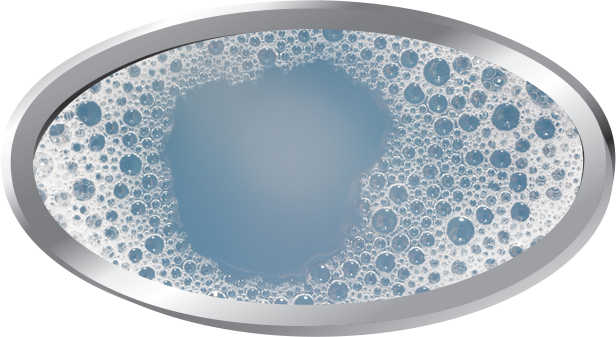The Role of Defoamers in Enhancing Item Top Quality and Performance
In various manufacturing procedures, the presence of foam can substantially impede product quality and functional performance. Defoamers offer as crucial additives that minimize this issue, making sure smoother manufacturing workflows while enhancing the practical and visual attributes of the end products (defoamers). Their application extends a plethora of sectors, from food and beverage to pharmaceuticals, where consistency and reliability are vital. Nonetheless, the selection of the proper defoamer can be important to accomplishing ideal outcomes, elevating important questions about formulation compatibility and efficiency metrics that warrant additional expedition.
Understanding Defoamers
Comprehending the duty of defoamers is crucial for keeping product quality throughout numerous sectors. Defoamers are chemical ingredients designed to prevent the formation and minimize of foam in liquid systems, which can detrimentally impact processes such as mixing, filling up, and surface tension. Frothing can bring about inadequacies, product defects, and endangered visual appeal, making defoamers an important part in producing operations.
In industrial applications, defoamers assist to improve product uniformity and security. In the paint and coverings sector, foam can conflict with the application process and the final coating. Similarly, in food and drink manufacturing, too much foam can hinder bottling and product packaging performance (defoamers). The effective use of defoamers not just makes certain smoother production processes yet likewise adds to exceptional product efficiency.
Furthermore, the selection and formulation of a defoamer should straighten with specific application requirements, such as compatibility with other active ingredients, performance under differing temperature and pH problems, and prospective regulatory restraints. Ultimately, comprehending defoamers' features and their significance in various formulas is vital for optimizing manufacturing and guaranteeing the best quality final product.
Kinds of Defoamers
Defoamers can be categorized right into numerous types based on their make-up and mechanism of activity. The key types consist of silicone-based, non-silicone natural, and inorganic defoamers.
Silicone-based defoamers are amongst the most reliable, primarily as a result of their capacity to spread promptly on the liquid surface and disrupt foam development. Their special chemical framework permits remarkable stability, making them suitable for high-temperature applications and settings with differing pH levels.
Non-silicone natural defoamers, typically composed of fatty acids or natural oils, are valued for their biodegradability and reduced poisoning. These are normally utilized in food and beverage applications where safety and environmental effect are extremely important.
Not natural defoamers, that include substances like talc or calcium carbonate, act by enhancing the thickness of the fluid, thus minimizing foam stability. They are typically used in industrial procedures where compatibility with other materials is not an issue.
Each type of defoamer has distinct advantages and constraints, enabling tailored services depending on the particular lathering concerns run into in numerous applications. Comprehending these differences is vital for optimizing efficiency and accomplishing wanted item quality.
Applications Across Industries
Many sectors utilize defoamers to improve item quality and functional effectiveness. In imp source the food and beverage sector, defoamers are critical in procedures such as brewing and dairy manufacturing to stop foam development, which can cause inadequacies and product incongruity. By regulating foam, makers can make certain much better return and a much more uniform item.
In the pharmaceutical industry, defoamers play an important function in the formula of liquid medicines, where extreme foam can restrain blending and precise application. Their use helps preserve the honesty of the formulations and promotes smoother manufacturing procedures.
The paint and finishings sector also counts on defoamers to enhance the efficiency of products during application. By decreasing foam, these ingredients make certain a smoother finish and enhance the aesthetic high qualities of the end product.

Advantages of Making Use Of Defoamers
While the application of defoamers varies throughout sectors, their benefits consistently enhance product high quality and procedure efficiency. One substantial benefit is the decrease of foam development during producing procedures, which can or else result in manufacturing delays and disparities in item high quality. By reducing foam, defoamers make it possible for a smoother circulation of materials, helping with a lot more effective operations and minimizing the probability of equipment malfunctions.
In addition, using defoamers can enhance the appearance and texture of final items. In sectors such as finishings, paints, and food processing, extreme foam can jeopardize the aesthetic appearances and total quality, while the ideal defoamer application makes certain a consistent finish and preferable features. In addition, defoamers can contribute to set you back financial savings by reducing waste throughout production and maximizing the use of basic materials (defoamers).

Picking the Right Defoamer
Picking the appropriate defoamer is important for enhancing manufacturing processes and making sure item quality. The selection of defoamer affects not just the effectiveness of foam control yet additionally the overall performance attributes of the end product. Elements to take into consideration consist of the kind of application, the chemistry of the formulation, and the ecological problems under which the item will be used.
Different sectors may need specific defoamer types, such as silicone-based, organic, or polymeric defoamers. Recognizing the compatibility of the defoamer with the primary ingredients is essential to stay clear of negative reactions that might jeopardize item integrity. In addition, the defoamer's performance in various temperatures and pH levels should be reviewed to make sure constant performance.
Checking the defoamer in small-scale applications can supply beneficial understandings into its performance and suitability. Factor to consider of regulative conformity, especially in food, pharmaceuticals, and cosmetics, is vital in choosing a defoamer. Eventually, a thorough assessment of these aspects will result in the choice of a defoamer that not only manages foam successfully however additionally boosts the quality and efficiency of the final product.
Conclusion

In final thought, defoamers are important ingredients that considerably straight from the source enhance product top quality and performance across numerous sectors. The calculated selection and application of defoamers lead to set you back savings, enhanced resource usage, and increased customer contentment.
Frothing can lead to inefficiencies, product issues, and jeopardized aesthetic allure, making defoamers an important element in making procedures.
